Home > Article > Backend Development > Example introduction: Use Docker to quickly build a multi-version PHP development environment
This article brings you relevant knowledge about PHP, which mainly introduces the relevant content on how to use docker to quickly build a multi-version PHP development environment. Let’s take a look at it together and hope it will be helpful to everyone. helpful.
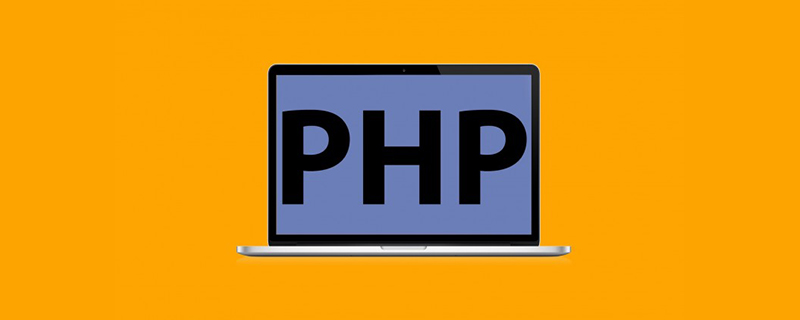
PHP Video Tutorial"
Software used in the article: ## Target
## Target
Supports PHP 7.2.x Environment
Download
Download address: Docker official website https://www.docker.com/products/docker-desktop
Agent settings
"registry-mirrors" : [
"http://registry.docker-cn.com",
"http://hub-mirror.c.163.com"
],
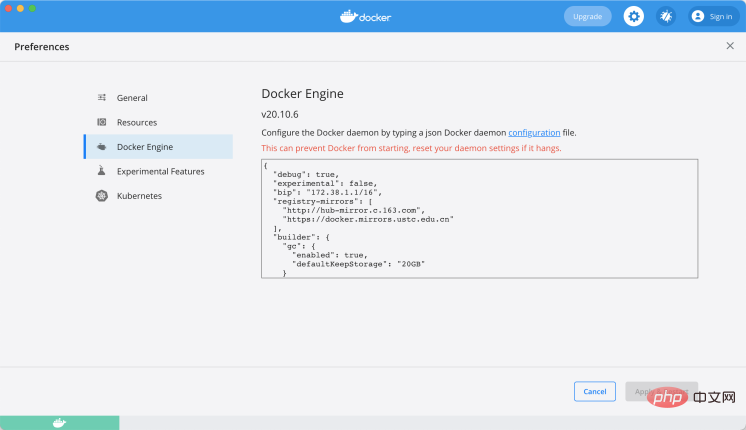 Configure environment
Configure environment
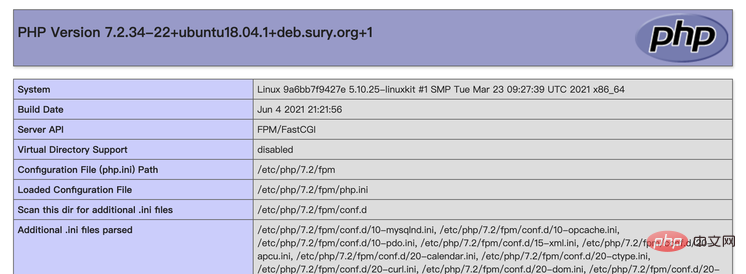 ##PHP 5.6.x , occupying local port 8082
##PHP 5.6.x , occupying local port 8082
Start docker;
Port mapping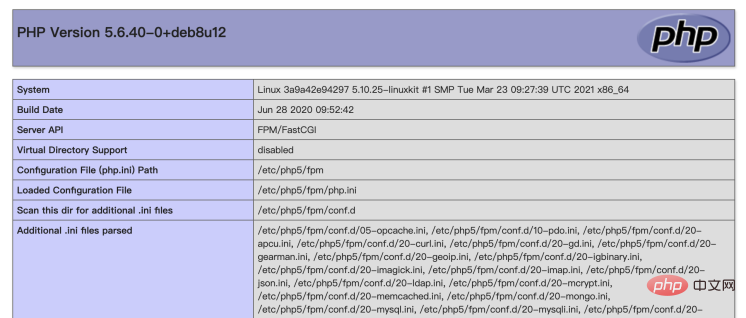
Download method:
Download from the Chrome App Store and search for Simple Proxy.
After successful configuration, visit http://local.php72.com/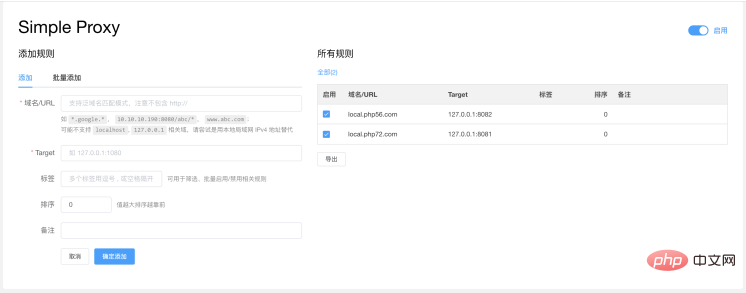
##local.php56.com - > 127.0.0.1:8082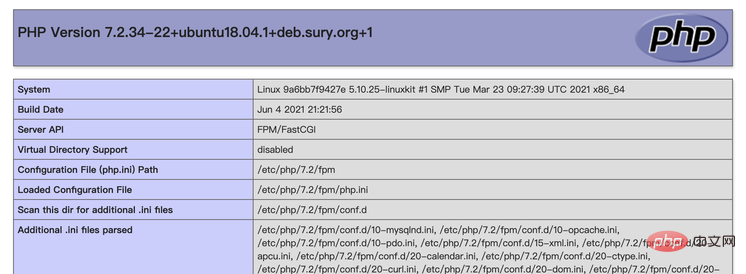
Same as above. Remarks
docker-compose related commandsdocker-compose up Build container parameters [-d] for background operation
docker-compose start Enable container
docker-compose stop Stop container
docker- compose restart Restart the container
docker-compose down Delete the container
php7-2-x Directory Introduction
├── docker-compose.yml
├── log
│ └── nginx
│ └── local.php72.com_access.log
├── phpdocker
│ ├── README.html
│ ├── README.md
│ ├── nginx
│ │ └── default.conf
│ └── php-fpm
│ ├── Dockerfile
│ └── php-ini-overrides.ini
└── web
└── phpinfo
└── index.php1. docker-compose.yml, the configuration file for container orchestration, the file does not need to be changed. version: "3.1"
services:
webserver:
image: nginx:alpine
container_name: php7-2-x-webserver
working_dir: /application
volumes:
- .:/application
- ./phpdocker/nginx:/etc/nginx/conf.d
ports:
- "8081:80"
php-fpm:
build: phpdocker/php-fpm
container_name: php7-2-x-php-fpm
working_dir: /application
volumes:
- .:/application
- ./phpdocker/php-fpm/php-ini-overrides.ini:/etc/php/7.2/fpm/conf.d/99-overrides.ini2. log/nginx is the log directory, including xxx_access.log and xxx_php_errors.log, and xxx is the configured virtual domain name. 3. phpdocker/nginx configures the directory for the virtual domain name. The virtual domain name configured in default.conf is local.php72.com. No need to explain too much. Everyone can understand it at a glance. Other directories and files do not need to be adjusted. server {
listen 80;
server_name local.php72.com;
client_max_body_size 108M;
access_log /application/log/nginx/${server_name}_access.log;
root /application/web/phpinfo;
index index.php;
# try to serve file directly, fallback to index.php
location / {
try_files $uri /index.php$is_args$args;
}
if (!-e $request_filename) {
rewrite ^.*$ /index.php last;
}
location ~ \.php$ {
fastcgi_pass php-fpm:9000;
fastcgi_index index.php;
fastcgi_param SCRIPT_FILENAME $document_root$fastcgi_script_name;
fastcgi_param PHP_VALUE "error_log=/application/log/nginx/${server_name}_php_errors.log";
fastcgi_buffers 16 16k;
fastcgi_buffer_size 32k;
include fastcgi_params;
}
}4. web is the code warehouse directory, where phpinfo is the code directory pointed to by the domain name local.php72.com. If you want to add a new virtual domain name (local.abc.com) configuration, you only need 3 steps:
Place the code folder abc in the web directory ;
How to generate zip file?
You may have questions, how is the zip file generated? What if I want to build another version of the environment?These files are generated online, URL: https://phpdocker.io/generator[3]
Supported PHP versions are: 5.6. x, 7.0.x, 7.1.x, 7.2.x, 7.3.x, 7.4.x, etc.
It also supports MySQL, MariaDB, Elasticsearch, etc. 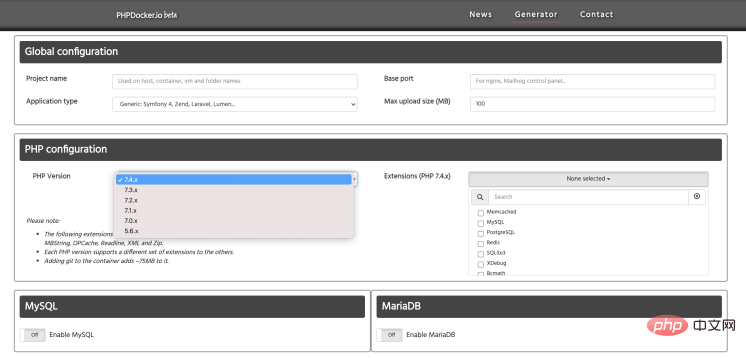
After selecting as needed, click Generate project archive to generate the compressed package.
The above php5-6-x.zip and php7-2-x.zip are generated in this way. They are just fine-tuned, such as configuring the log directory, web directory, etc.
Recommended learning: "PHP Video Tutorial"
The above is the detailed content of Example introduction: Use Docker to quickly build a multi-version PHP development environment. For more information, please follow other related articles on the PHP Chinese website!